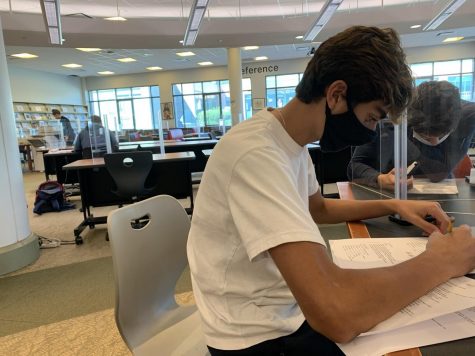COVID-19 further reveals outdated state of U.S. educational system
The current state of the U.S. educational system is one that may work for few, but fails for many, which warrants urgent reform that addresses its many faults.
Technology, fashion, and transportation. These are just some of the numerous components of everyday life that have evolved over decades, ever changing to meet the current needs of the population. Yet, there is one essential part of almost everyone’s life that has been stuck in place for far too long: the educational system.
According to information from Psychology Today, the origins of the modern structure of the educational system is rooted in industrialization and the need for efficient workers. These workers were essentially forced to comply with social standards, stripping them of the opportunity to be independent thinkers.
For decades, the U.S. government has advocated for education reform, yet this reform has been nothing more than a push for the evaluation of students’ worth by utilizing standardized tests that do not depict the academic abilities of students, but rather their ability to regurgitate indoctrinated information crammed into 180-day curriculums.
this reform has been nothing more than a push for the evaluation of students’ worth by utilizing standardized tests that do not depict the academic abilities of students, but rather their ability to regurgitate indoctrinated information crammed into 180-day curriculums.
A 2020 Time article examined the education initiatives of past presidential administrations such as President George W. Bush’s No Child Left Behind and President Barack Obama’s Race to the Top, which attempted to solve the faults of the educational system but continued to emphasize the importance of standardized testing.
The initiatives passed on the state and local levels were simply hollow plans that gave lawmakers a sense of gratification, with little to no positive impact on the wellbeing of today’s students.
Then a global pandemic hit, and the structure of the U.S. educational system was put to the test. The results? The realization that the educational system in this country is an inequitable and inadequate institution that fails to prepare America’s youth.
A 2013 study done by the National Council on Teacher Quality found that nearly two-thirds of young teachers are ill-prepared to enter the classroom and with hybrid learning disrupting the learning process of students, the futures of students are more vulnerable than ever before and something must be done before the damage becomes irreversible.
Online learning has significantly worsened the mental health of students and a study done by Active Minds found that 20% of college students say that their mental health has worsened during the pandemic. Instead of ignoring this mental health epidemic, the education system must do its part in accommodating to the ever changing needs of students.
It is time to do away with the old ways of teaching and embrace a new era of education that has less of an emphasis on meaningless tests and instead establishes a curriculum that emphasizes the importance of collaborative work and evaluates the academic abilities of students by incorporating meaningful projects that allow students to use the tools they learn and apply it to different situations.
The students of today are the world’s future and it is time to stop treating them as just another student ID number.

There are many lesser-known sports that students participate in at Staples High School.
“I feel like a lot of people don't know this,” Paper Opinions...






























































